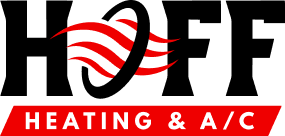5 Steps to Better Indoor Air Quality
Poor indoor air quality is often to blame for a runny nose, itchy eyes, or asthma attacks. Indoor air pollutants come from many sources. Dust, pet dander and fur, pollen, mold spores, volatile organic compounds, and excess humidity are common types of indoor pollutants. Most homes don’t have all of these pollutants at once, but one or more of them could bother you or even threaten your health. No one is helpless in the face of these irritants. You can take steps to identify and correct your problems. A little vigilance and the right equipment can substantially improve your indoor air quality. Change Furnace Filters Regularly People with forced-air heat have filters between a furnace and its intake for circulating air. A furnace filter is an easy thing to forget because it’s out of sight and out of mind. The furnace filter grabs dust, pollen, and other debris circulating through your ducts. This helps to eliminate the dust that constantly infiltrates any home. The filter also serves to protect your heating system by preventing a troublesome buildup of dirt that will interfere with heating equipment operation. When filters go unchanged, air ceases to move easily through the system. Your furnace...
View Article Read More
 Call Us Today
Call Us Today
